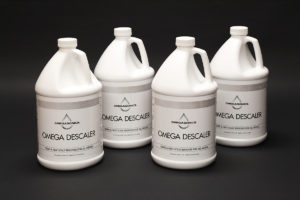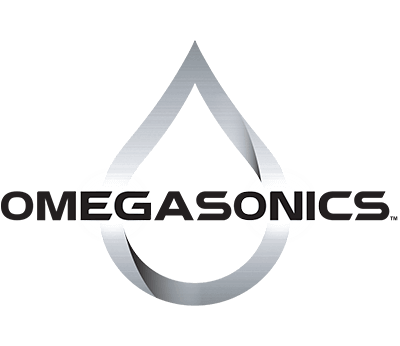
Introduction
Ultrasonic cleaners are powerful tools for deep cleaning a wide range of items, from delicate jewelry to industrial machine parts. However, the effectiveness of an ultrasonic cleaner largely depends on the ultrasonic cleaning solution used. The right solution can significantly enhance the cleaning process, removing dirt, grease, oxidation, and contaminants with precision.
In this comprehensive guide, we’ll cover everything you need to know about ultrasonic cleaning solutions, including:
- What makes an effective ultrasonic cleaning solution
- Different types of solutions and their applications
- How to choose the best solution for your needs
- DIY vs. commercial solutions
- Maintenance tips for long-lasting cleaning efficiency
Let’s dive in!
What Is an Ultrasonic Cleaning Solution?
An ultrasonic cleaning solution is a specially formulated liquid designed to work with ultrasonic cleaners. When combined with ultrasonic waves, the solution penetrates tiny crevices and removes stubborn contaminants that traditional cleaning methods often miss.
How Does It Work?
- Cavitation Process – The ultrasonic cleaner generates high-frequency sound waves that create microscopic bubbles in the solution.
- Bubble Collapse – These bubbles rapidly expand and collapse, creating powerful shock waves that break down dirt and contaminants.
- Deep Cleaning – The solution enhances the cavitation effect by softening grime, dissolving grease, and lifting dirt away from surfaces.
Types of Ultrasonic Cleaning Solutions
Choosing the right ultrasonic cleaning solution depends on the type of material you’re cleaning and the contaminants you need to remove. Here are the most common types:
- Alkaline Ultrasonic Cleaning Solutions
- Best For: Metals, plastics, glass, ceramics
- Removes: Grease, oils, dust, and light oxidation
- pH Level: Usually between 9-12
- Example Applications: Automotive parts, medical tools, general cleaning
- Acidic Ultrasonic Cleaning Solutions
- Best For: Rusted metals, tarnished brass, copper
- Removes: Rust, oxidation, scale buildup
- pH Level: Below 7
- Example Applications: Jewelry cleaning, industrial rust removal
- Neutral Ultrasonic Cleaning Solutions
- Best For: Sensitive materials (aluminum, zinc, electronics)
- Removes: Light dirt, dust, oils
- pH Level: Around 7
- Example Applications: Circuit boards, optics, delicate tools
- Enzymatic Ultrasonic Cleaning Solutions
- Best For: Medical and dental instruments, organic residue removal
- Removes: Blood, proteins, biofilm
- Example Applications: Hospitals, labs, veterinary clinics
- Deionized Water with Surfactants
- Best For: General-purpose cleaning, safe for most materials
- Removes: Light dirt, minor contaminants
- Example Applications: Optics, lenses, precision instruments
How to Choose the Best Ultrasonic Cleaning Solution
When selecting the right ultrasonic cleaner solution, consider these factors:
- Material Compatibility
Certain solutions can corrode sensitive materials like aluminum or damage coatings on electronics. Always check if the formula is safe for your specific item.
- Type of Contaminant
Different solutions are designed to remove different types of dirt, grease, oxidation, or biological debris. Identify what you need to clean before choosing a solution.
- pH Level
- Alkaline solutions: Great for grease and oil removal
- Acidic solutions: Best for rust and oxidation
- Neutral solutions: Ideal for delicate items
- Biodegradable vs. Harsh Chemicals
For eco-friendly cleaning, choose biodegradable solutions. Industrial-strength solutions may contain harsher chemicals but offer deeper cleaning.
- Water-Based vs. Solvent-Based
- Water-based solutions: Safer, eco-friendly, and widely used
- Solvent-based solutions: More aggressive, best for heavy-duty industrial cleaning
DIY vs. Commercial Ultrasonic Cleaning Solutions
Some people prefer to make their own ultrasonic cleaner solution, while others opt for professional formulas. Let’s compare:
| Feature | DIY Solution | Commercial Solution |
| Cost | Low | Medium-High |
| Effectiveness | Limited | Highly effective |
| Safety | Varies | Tested for material safety |
| Convenience | Requires mixing | Ready-to-use |
DIY Ultrasonic Cleaning Solution Recipe
If you want to make your own ultrasonic cleaner solution, try this simple recipe:
Ingredients:
- 2 cups distilled water
- 1 tablespoon dish soap (degreasing formula)
- 1 teaspoon white vinegar (for mild acid cleaning)
- ½ teaspoon baking soda (for light alkalinity)
Instructions:
- Mix all ingredients in a container.
- Pour into your ultrasonic cleaner.
- Run a test with a small object to ensure safety.
Note: DIY solutions work for light cleaning but may not be as effective as commercial products for heavy-duty applications.
How to Use an Ultrasonic Cleaner Solution Properly
To get the best results, follow these steps:
- Prepare the Solution
- Mix the solution according to manufacturer instructions.
- Ensure the ultrasonic cleaner is filled to the correct level.
- Degas the Solution
- Run the ultrasonic cleaner for 5-10 minutes without any items to remove trapped air bubbles.
- Load the Items Correctly
- Avoid stacking items too closely.
- Use baskets to prevent direct contact with the cleaner’s bottom.
- Adjust Temperature & Time
- Warm water (100-140°F) enhances cleaning performance.
- Cleaning time varies (2-30 minutes) depending on dirt level and material.
- Rinse & Dry Items
- Rinse items with distilled water after cleaning.
- Dry thoroughly to prevent water spots or residue buildup.
Ultrasonic Cleaner Solution Maintenance & Storage Tips
- Replace solution regularly to maintain effectiveness.
- Filter out debris before reusing the solution.
- Store solutions in a cool, dry place to prolong shelf life.
- Use a fresh solution for sensitive items to avoid contamination.
Best Ultrasonic Cleaning Solutions on the Market
Here are some top-rated commercial solutions for different applications:
- Omegaclean – Great for general-purpose cleaning
- EZClean – Oils, light grease, dirt, grime and carbon
- Omegasmoke –Smoke remover cleaner removes soot, smoke odors, dirt, grime due to fire damage
- Descaler – Removes rust, corrosion, heat scale, and mineral deposits
For the latest and most effective ultrasonic cleaning solutions, check out reviews from trusted sources.
Conclusion
Using the right ultrasonic cleaner solution is key to maximizing the cleaning power of your machine. Whether you need to remove grease, rust, or delicate residues, choosing the appropriate formula ensures superior results.
For best results, follow these key takeaways:
✔ Match the solution to the material and type of dirt
✔ Use the correct pH level for safe and effective cleaning
✔ Consider commercial solutions for deep cleaning power
✔ Maintain and replace the solution regularly for optimal performance
By following this guide, you’ll ensure that your ultrasonic cleaning process is as efficient and effective as possible!
Looking for the best ultrasonic cleaner solution for your needs? Browse our ultrasonic cleaner solutions and start cleaning smarter today!
